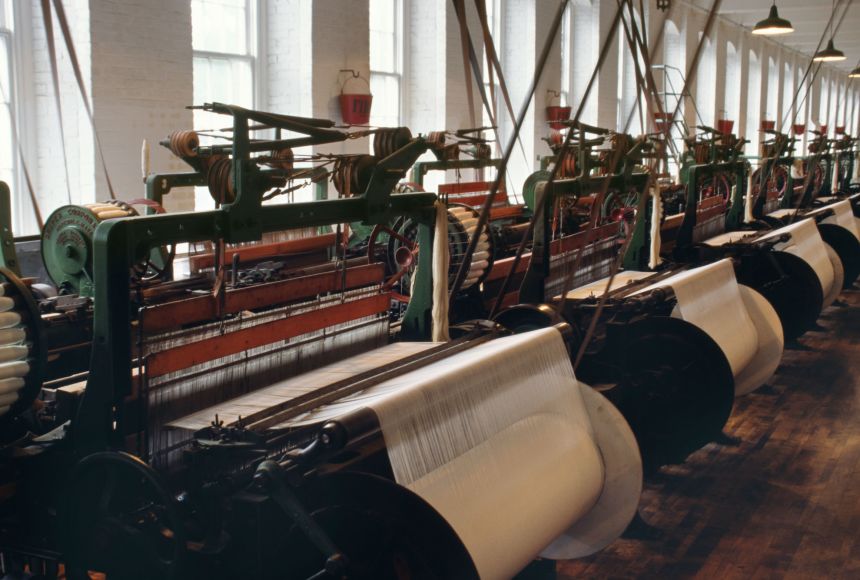ARTICLE
leveledARTICLE
Industrialization, Labor, and Life
Industrialization, Labor, and Life
Industrialization ushered much of the world into the modern era, revamping patterns of human settlement, labor, and family life.
Grades
3 - 12
Subjects
Social Studies, Economics, U.S. History, World History
Image
Power Looms
Women and children were often employed in the textile industry during the first century of industrialization. Their smaller fingers were often better at threading the machinery. Despite routinely working 16 hours, or longer, a day they were paid little.
Photograph by Nancy Carter

Media Credits
The audio, illustrations, photos, and videos are credited beneath the media asset, except for promotional images, which generally link to another page that contains the media credit. The Rights Holder for media is the person or group credited.
Director
Author
Production Managers
Program Specialists
Producer
other
Last Updated
November 15, 2024
For information on user permissions, please read our Terms of Service. If you have questions about how to cite anything on our website in your project or classroom presentation, please contact your teacher. They will best know the preferred format. When you reach out to them, you will need the page title, URL, and the date you accessed the resource.
Media
If a media asset is downloadable, a download button appears in the corner of the media viewer. If no button appears, you cannot download or save the media.
Text
Text on this page is printable and can be used according to our Terms of Service.
Interactives
Any interactives on this page can only be played while you are visiting our website. You cannot download interactives.
